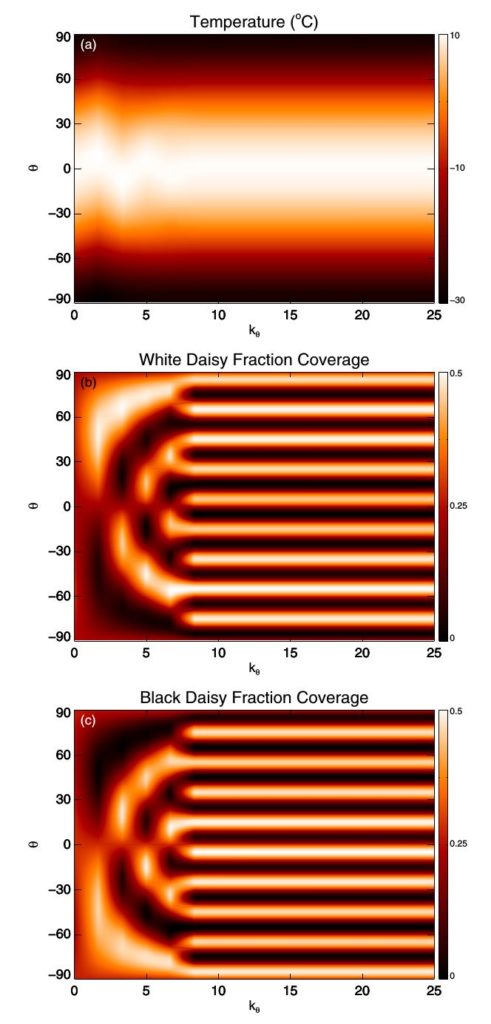We point out to the community an interesting paper by the UNICAL group on a modified version of the Daisyworld model. First author of the paper is the SWICo member Tommaso Alberti.
 Abstract:
Abstract:
We investigate a modified version of the Daisyworld model, originally introduced by Lovelock and Watson to describe in a simple way the interactions between an Earth-like planet, its biosphere, and the incoming solar radiation, where spatial dependency, variable heat diffusivity, and greenhouse effect are explicitly taken into account.
In this way, we obtain a more realistic energy-balance model to investigate the evolution of the Earth’s climate by considering several influencing factors.
The model is based on a hypothetical planet, like the Earth, which receives the radiant energy coming from a Sun-like star, and is populated by two kinds of identical plants differing in their color: white daisies reflecting light and black daisies absorbing light. The interactions and feedbacks between the collective biota of the planet and the incoming
radiation form a self-regulating system where the conditions for life are maintained.
We show that the diffusion process is able to destabilize the system and plays an important role in setting the symmetry with respect to the equator. The greenhouse effect, modeled through a grayness function, affects the temperature evolution and contributes to self-regulating the planet climate, in agreement with observational data analysis.
The equilibrium state is significantly dependent on the initial conditions. The initial conditions of daisy
coverage influence the vegetation profiles although they do not significantly modify the temperature behavior. This implies that a different surface coverage by oceans, ice and vegetation can locally change their interactions, producing local micro-climate (similar to the climatic zones).
This model could be very useful in the framework of climate changes, due to its simplicity, to provide both global and local informations about temperature and biosphere changes.
